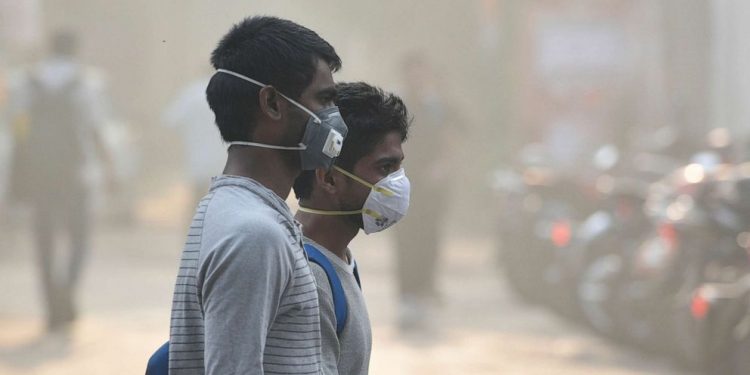New Delhi: Air pollution contributed to 8.1 million deaths worldwide in 2021, with India and China recording 2.1 million and 2.3 million fatalities, respectively, according to a report released Wednesday.
Published by the Health Effects Institute (HEI), an independent US-based research organisation, in partnership with UNICEF, the report also highlighted that air pollution claimed lives of 1,69,400 children in India under the age of five in 2021.
Nigeria followed with 1,14,100 child deaths, Pakistan with 68,100, Ethiopia with 31,100, and Bangladesh with 19,100, it said.
The report said nearly 50 per cent of all ozone-related chronic obstructive pulmonary disorder (COPD) deaths in 2021 were recorded in India (2,37,000 deaths), followed by China (1,25,600) and Bangladesh (15,000).
The report also said that air pollution was the leading risk factor for deaths in South Asia, followed by high blood pressure, diet, and tobacco.
It was the second leading risk factor for death among children under five in 2021, after malnutrition.
The report noted, “The year 2021 saw more deaths linked to air pollution than were estimated for any previous year. With populations over 1 billion each, India (2.1 million deaths) and China (2.3 million deaths) together account for 54 per cent of the total global disease burden.”
Other countries with high impacts included Pakistan (2,56,000 deaths), Bangladesh (2,36,300) and Myanmar (1,01,600 deaths) in South Asia; Indonesia (2,21,600 deaths), Vietnam (99,700 deaths), and the Philippines (98,209) in Southeast Asia; and Nigeria (2,06,700 deaths) and Egypt (1,16,500 deaths) in Africa.
Taken together, air pollution from PM2.5 and ozone was estimated to contribute to 8.1 million deaths — about 12 per cent of the total global deaths — in 2021.
More than 90 per cent of these global air pollution deaths — 7.8 million people — are attributed to PM2.5 pollution, including from ambient PM2.5 and household air pollution.
These tiny particles, measuring less than 2.5 micrometers in diameter, are so small they remain in the lungs and can enter the bloodstream, affecting many organ systems and increasing the risks for noncommunicable diseases in adults such as heart ailment, stroke, diabetes, lung cancer, and COPD.
According to the report, PM2.5 has been found to be the most consistent and accurate predictor of poor health outcomes around the world.
“We hope our State of Global Air report provides both the information and the inspiration for change,” said HEI President Elena Craft.
“Air pollution has enormous implications for health. We know that improving air quality and global public health is practical and achievable,” Craft said.
“This new report offers a stark reminder of the significant impacts air pollution has on human health, with far too much of the burden borne by young children, older populations, and low- and middle-income countries,” said Pallavi Pant, HEI’s Head of Global Health.
“This points sharply to an opportunity for cities and countries to consider air quality and air pollution as high-risk factors when developing health policies and other noncommunicable disease prevention and control programs,” Pant said.
PTI







































